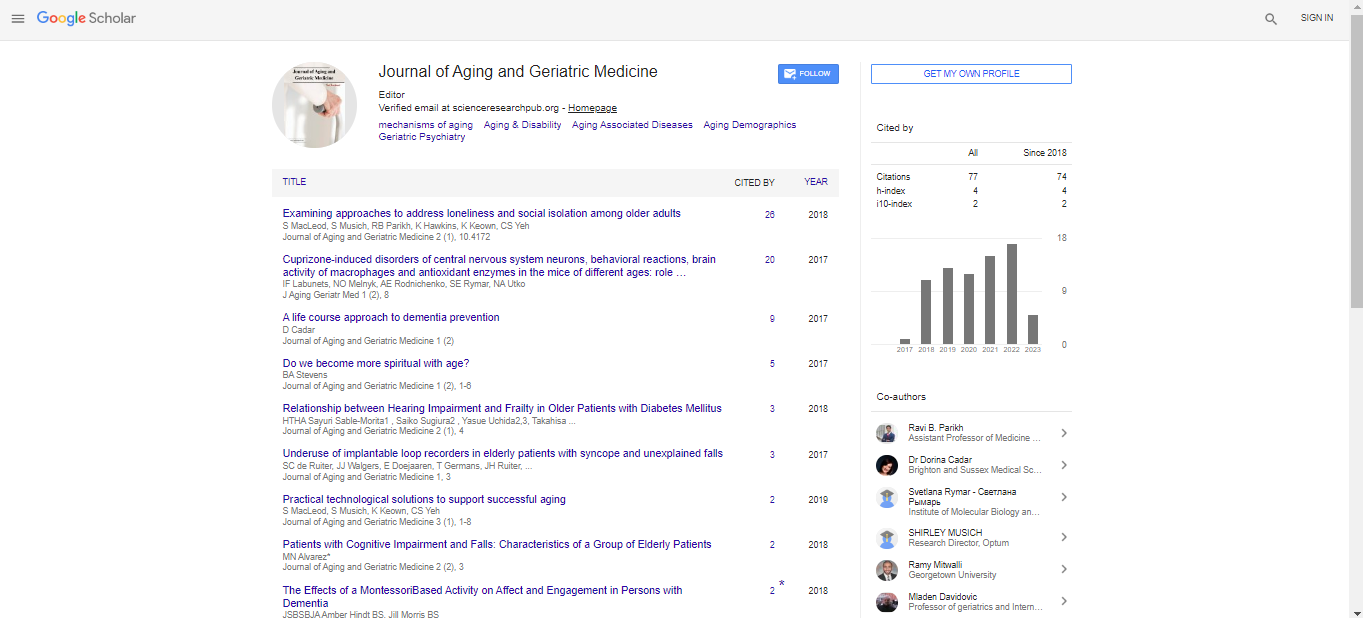Exploring the association between multi-morbidity and elderly abuse/neglect in India
T Sathya
International Institute for Population Sciences, India
: J Aging Geriatr Med
Abstract
Introduction: The prevalence of multi-morbidity is increasing mainly as a result of changing age structure along with rapid urbanization and health risk factors. However, to our knowledge, no previous study examined the association between multi-morbidity and elder abuse or maltreatment in India. The aim of the study is to assess the impact of chronic multi-morbidity conditions on elder abuse using nationally representative data.
Methods: Cross-sectional data from the United Nations Population Fund (UNFPA) survey “Building Knowledge Base on Population Aging in India” (BKPAI- 2011) was used. The data consist of a sample of 9589 elderly aged 60 and above in seven states of India. Bivariate analysis multivariate logistic regression was used.
Results: The overall prevalence of elder abuse in the study population is 10.1 percent with significant variation across the states. The prevalence of elder abuse among older adults with no chronic diseases is 6.01 percent and increases to 22.7% among older adults with 4+chronic diseases. Furthermore, result from multivariate logistic regression suggested a close association between multi-morbidity and elder abuse. Older adults with 2, 3, 4+ chronic diseases are 2.91 (95% Confidence Interval (CI): 2.32-3.66, p<.000), 3.96 (95% CI: 3.00-5.22, p<.000), 5.74 (95% CI: 4.24-7.77, p<.000) times more likely to experience elder abuse/neglect than older adults with no chronic diseases, respectively.
Conclusion: Our finding suggests that multimorbidity conditions play a significant role in determining the high prevalence of elder abuse. Therefore, any measure to prevent chronic diseases will have significant implications in preventing elder abuse in India.
Biography
E-mail: sathya187@yahoo.com
 Spanish
Spanish  Chinese
Chinese  Russian
Russian  German
German  French
French  Japanese
Japanese  Portuguese
Portuguese  Hindi
Hindi 